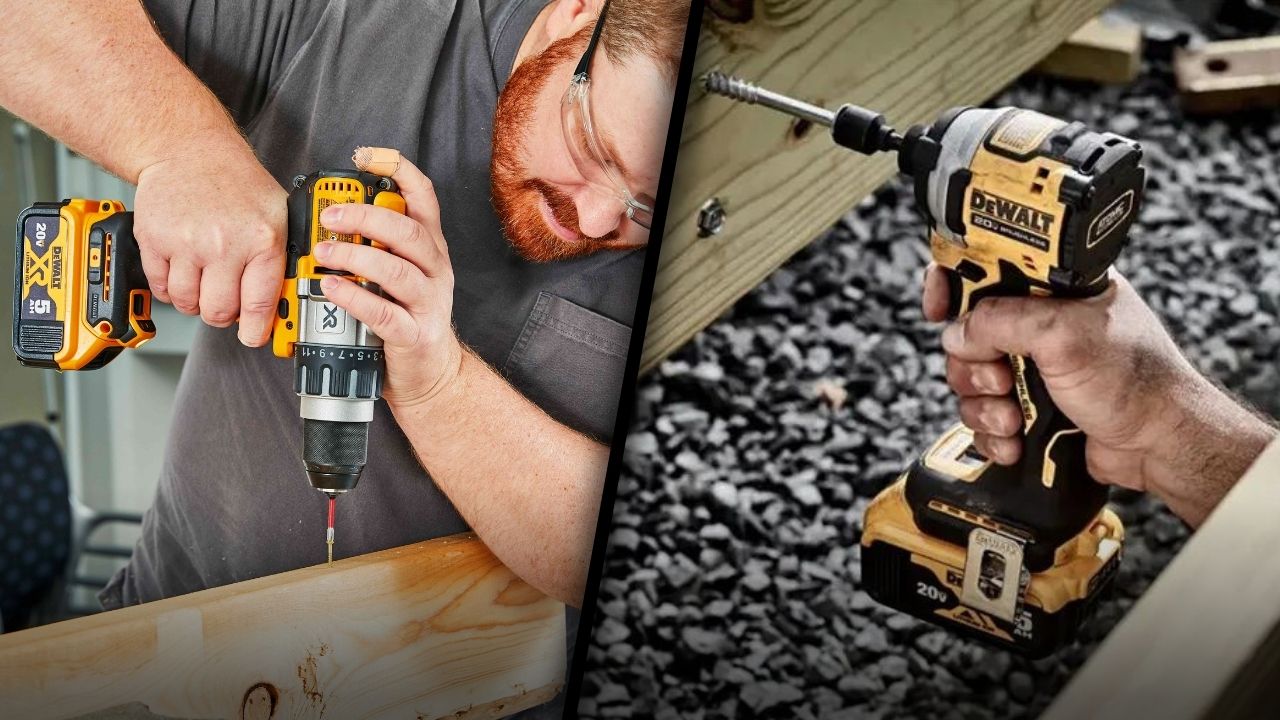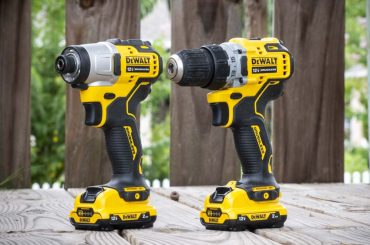Do you wonder whether it is better to rent an impact driver or use a hammer drill as a DIYer? Here are some tips for making that decision easily.
New DIYers often have trouble identifying hammer drills and impact drivers. It is understandable that there is confusion. Since both feature striking mechanisms and drive fasteners, they are loud and have striking mechanisms.
There is actually a difference between these two tools. Their strengths and weaknesses may be similar, but despite looking and sounds similar, they have unique characteristics.
What Is a Hammer Drill?
When drilling through tough surfaces, hammer drills are used. With standard chucks, triggers, and speed controls, hammer drills look and work just like traditional power drills, but they provide a greater amount of power and torque. Hammer drills can also be turned either clockwise or counterclockwise, just like an electric drill.
In addition to one hammer setting, the drill is equipped with a mechanism that activates the hammer setting. When the “hammer” hits the chuck, it strikes the back. By using these strikes, also known as “blows,” the drill bit sends an impact into the material it is drilling. Every time the bit is struck, it is punched forward. It is possible for some hammer drills to produce as many as 48,000 blows per minute (BPM).
For battery-operated models, hammer drills generally cost between $100 and $250. Depending on the model, corded models can cost anywhere from $75 to $200. Battery-operated models are popular with modern advances in lithium-ion technology because of their portability, but some corded models are more powerful.
What Is an Impact Driver?
Screws and lag bolts are driven with the help of an impact driver, which is a power tool.
In contrast to most drills with jaws, this tool uses ball-bearing chucks that can be changed quickly. It is not compatible with conventional round-shank drill bits, but the special chuck can accommodate hex-shank, quick-change, impact-ready drill bits. Additionally, impact drivers are short and stubby compared with standard drills.
Fasteners can be sped up by impact drivers, as well as rotated clockwise and counterclockwise. The rotational impact anvil automatically activates after the impact driver detects some resistance from the fastener. Impacts are the strikes that take place on anvils, and some drivers can produce up to 4,000 impacts per minute (IPM)!
Due to the additional torque generated by each impact, the anvil is capable of driving longer and larger fasteners than it would otherwise be able to do.
It is also important to keep in mind that impact drivers can deceive in terms of speed. There is no steady, constant rotation of these tools. Before twisting the bit backward, they drive it forward a little, then drive it forward a little more. Two steps forward, one step back is a helpful way to think about it. As a result, fewer fasteners are stripped due to the tip of the driver bit slipping. In such a short period of time, it’s not noticeable.
There is generally a $100 to $200 price range for cordless impact drivers. It is rare to find corded models.
Hammer Drill vs Impact Driver: What Are They Used For?
Impact drivers and hammer drills can both cater to a wide range of purposes, but they shine in specific applications.
Hammer Drill Uses
It’s difficult to drill holes in bricks, tiles, and concrete. Hammer drills are indispensable in these situations. It shortens the monotonous task of drilling by punching forward the bit tip when the hammer function is enabled.
Hammer drills are commonly used for the following purposes:
-
Drilling a hole in a slippery backsplash or tile.
-
Attaching framing lumber through basement concrete.
-
Attaching handrails to concrete steps by drilling into them.
-
Brick walls can be adorned with TV wall mounts, shelves, or pictures.
-
In order to permanently fix a power tool stand to the ground, holes need to be drilled in the garage floor.
-
Inspecting the concrete utility room floor for holes to be drilled for attaching brackets to the mechanical system.
Note: Hammer drills require special masonry bits for drilling through masonry surfaces.
Impact Driver Uses
In a small tool, impact drivers pack a lot of punch. Smaller fasteners can be driven at high speeds with them, while longer fasteners can be driven without breaking out sockets or wrenches.
Impact drivers are commonly used for:
-
It is easier to drive smaller screws into thick wood or dense wood. Thin wood would be split by them.
-
If you are hanging cabinets or other heavy items, you may need to drive longer, heavy-duty screws quickly.
-
Lag bolts are used to fasten the ledger board to the deck.
-
The process of driving screws in tight places, such as between joists and studs, or inside cabinets, can be tricky.
Hammer Drill vs Impact Driver: Key Differences
Hammer drills and impact drivers differ in the following ways:
-
Hex-shank impact-ready bits are required for impact drivers, while all bits can be used with hammer drills.
-
Due to their smaller size, shorter length, and lighter weight, impact drivers are ideal for tight and awkward spaces.
-
Impact drivers use pressure-sensitive triggers to control speed, whereas hammer drills have speed and torque settings.
-
An impact driver’s anvil engages automatically when the impact drill is in hammer mode.
-
It is better to use an impact driver when the hammer setting is disengaged than to use a hammer drill.


